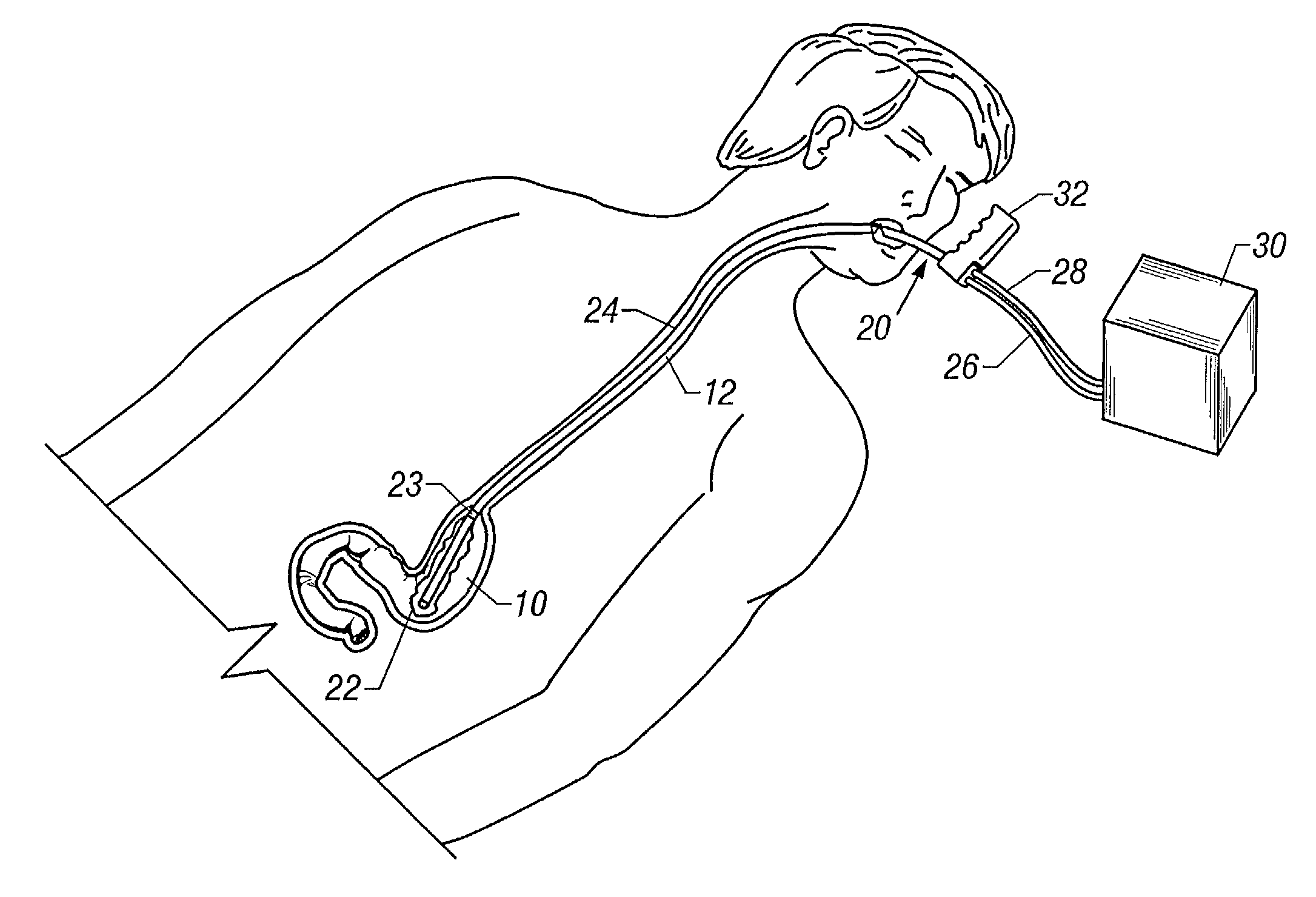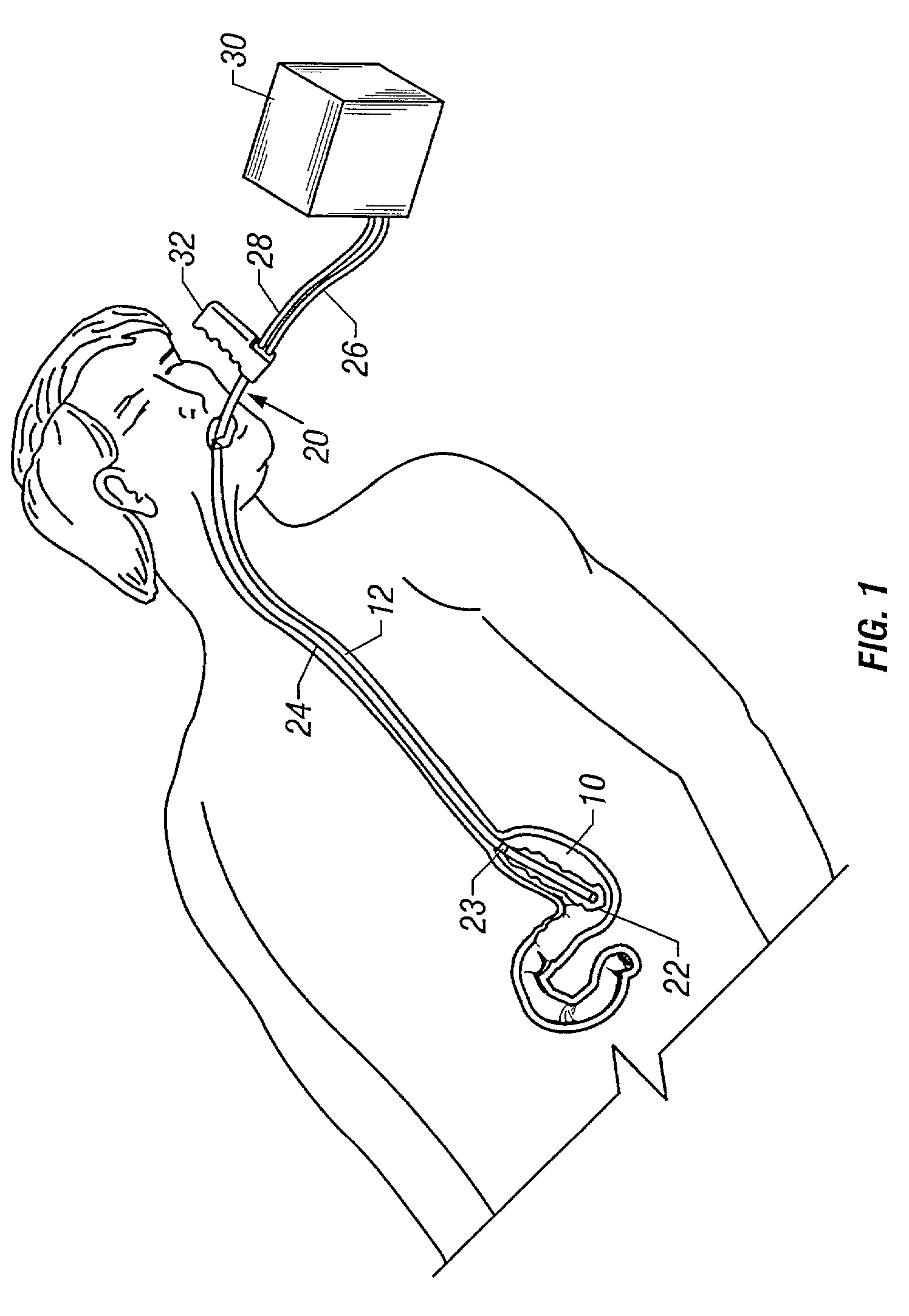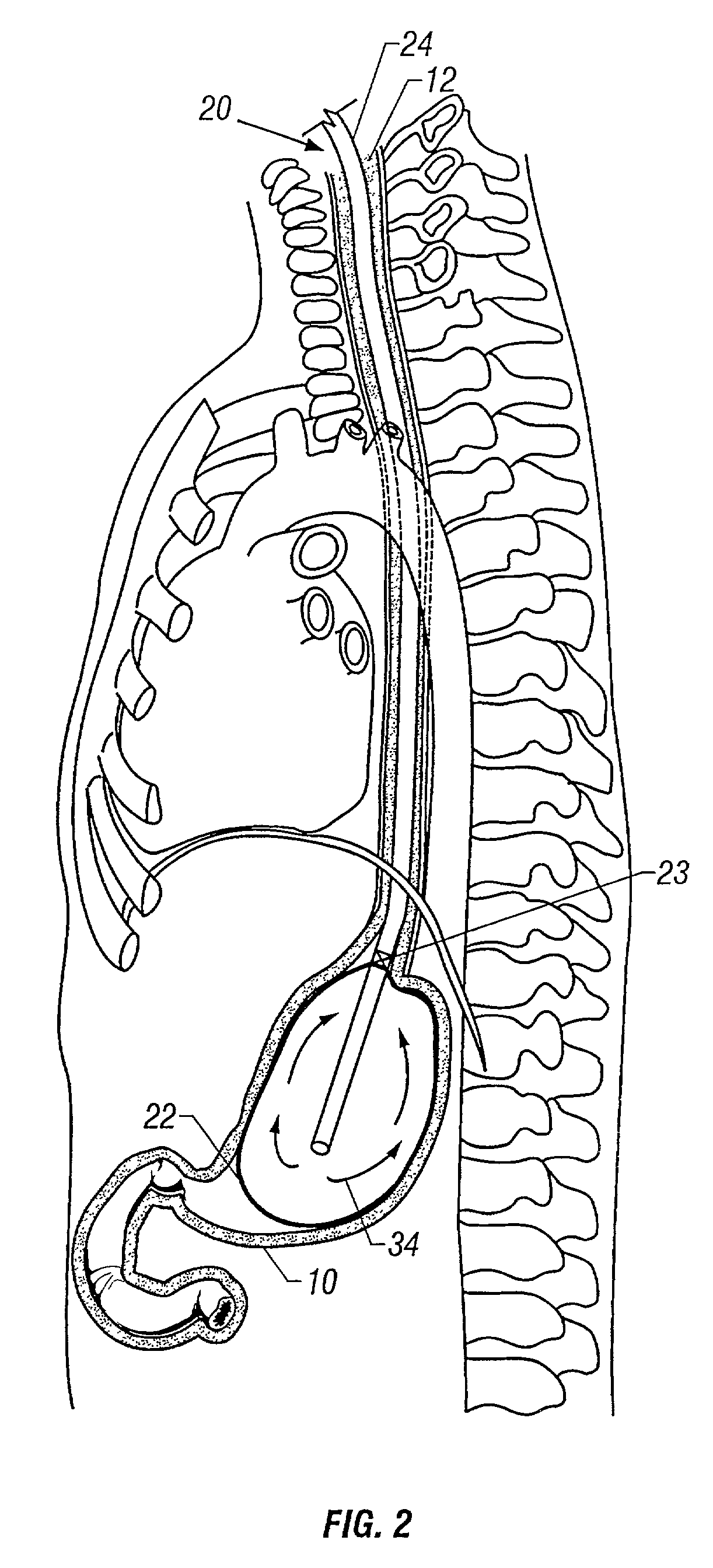Method for gastric cooling using balloon catheter
a gastric catheter and gastric cooling technology, which is applied in the field of gastric cooling using balloon catheters, can solve the problems of ineffective control of the core body temperature of the cooling surface and cold breathing gases, significant increase in the risk of a bad neurologic outcome suffered by a stroke victim, and rapid and uncontrolled rewarming, etc., and achieves rapid affecting the body temperature of the patient, excellent location for adding or removing heat from the bloodstream of the patient, and high vascular
- Summary
- Abstract
- Description
- Claims
- Application Information
AI Technical Summary
Benefits of technology
Problems solved by technology
Method used
Image
Examples
Embodiment Construction
[0025]As shown in the exemplary drawings, the invention is directed toward a non-invasive gastric apparatus and method of cooling, or otherwise manipulating, the body temperature of a patient using a balloon catheter. As used herein, like reference numerals will designate similar elements in the various embodiments of the present invention to be discussed. The invention will be described in relation to the use of a heat exchange fluid circulating within a balloon catheter placed within the stomach of a patient to induce hypothermia, or otherwise control the body temperature of the patient. It is to be understood, however, that the invention is not so limited. For example, although the invention will be described as using a heat exchange fluid, it is to be understood that other heat exchange mechanisms can be used.
[0026]Hypothermia is preferably induced in a manner fast and efficient enough to cool the patient without undue stress. Hypothermia may be induced by using a catheter that ...
PUM
 Login to View More
Login to View More Abstract
Description
Claims
Application Information
 Login to View More
Login to View More - R&D
- Intellectual Property
- Life Sciences
- Materials
- Tech Scout
- Unparalleled Data Quality
- Higher Quality Content
- 60% Fewer Hallucinations
Browse by: Latest US Patents, China's latest patents, Technical Efficacy Thesaurus, Application Domain, Technology Topic, Popular Technical Reports.
© 2025 PatSnap. All rights reserved.Legal|Privacy policy|Modern Slavery Act Transparency Statement|Sitemap|About US| Contact US: help@patsnap.com



